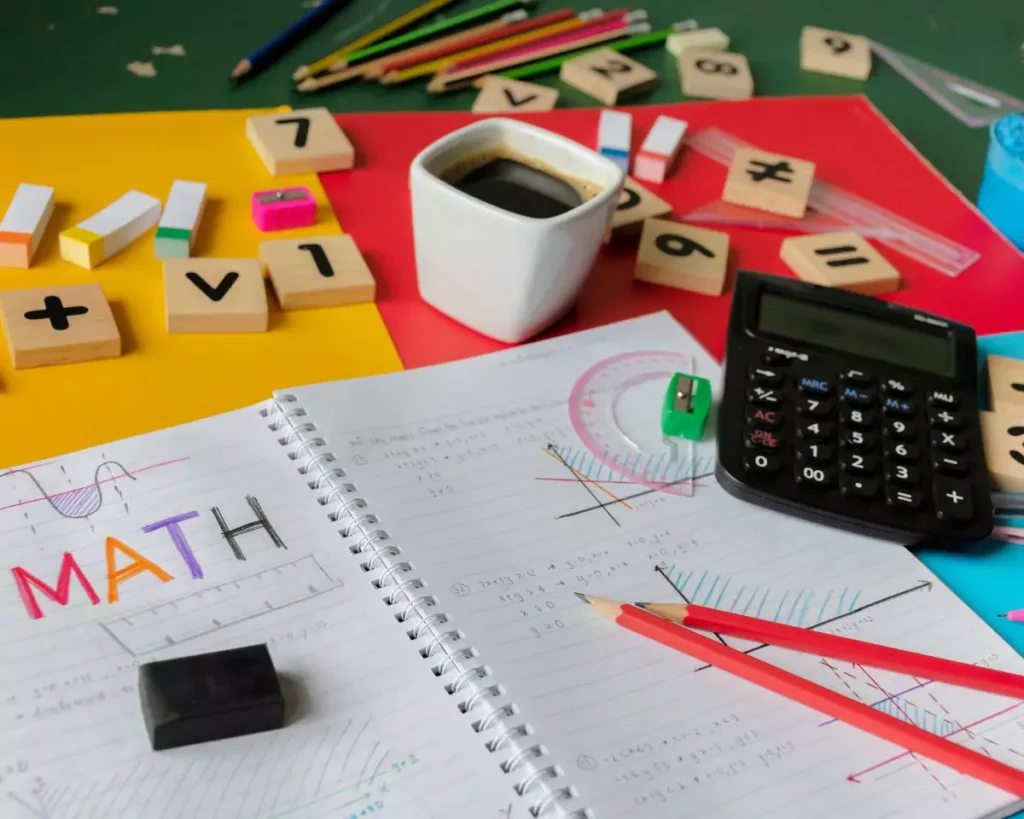
BITSAT Mathematics Syllabus 2022

Kritika yadav

BITSAT Mathematics Syllabus: BITS Pilani has released the BITSAT Mathematics syllabus along with the official brochure. The BITSAT syllabus is based on the NCERT syllabus for Classes 11 and 12, and it consists of four sections: Physics, Chemistry, English Proficiency, Logical Reasoning, and Mathematics/Biology.
Before beginning their studies, all BITSAT aspirants must consult the comprehensive and updated syllabus. As per previous trends, the mathematics section in the BITSAT exam is the toughest.
The BITSAT Mathematics syllabus 2022 gives a better idea of the subjects and topics that must be prepared for the exam. Candidates looking for information on the BITSAT Mathematics Syllabus 2023 can consult this article.
Over the past few years, there has been no change to the BITSAT syllabus. However, any new changes in the BITSAT syllabus will be updated here. The BITSAT Mathematics syllabus, BITSAT Mathematics algebra, BITSAT Mathematics trigonometry, BITSAT Mathematics linear programming, and other topics are covered in more detail in the following paragraphs.
List of Topics in the BITSAT Mathematics Syllabus 2023
- Algebra
- Trigonometry
- Two-dimensional Coordinate Geometry
- Three-dimensional Coordinate Geometry
- Differential calculus
- Integral calculus
- Ordinary Differential Equations
- Probability
- Vectors
- Statistics
- Linear Programming
- Mathematical modeling
BITSAT Mathematics Syllabus 2022
1. Algebra
- Complex numbers, addition, multiplication, conjugation, polar representation, properties of modulus and principal argument, triangle inequality, roots of complex numbers, geometric interpretations; Fundamental theorem of algebra.
- Theory of Quadratic equations, quadratic equations in real and complex number system and their solutions, relation between roots and coefficients, nature of roots, equations reducible to quadratic equations.
- Arithmetic, geometric and harmonic progressions, arithmetic, geometric and harmonic means, arithmetico-geometric series, sums of finite arithmetic and geometric progressions, infinite geometric series, sums of squares and cubes of the first n natural numbers.
- Logarithms and their properties.
- Exponential series.
- Permutations and combinations, Permutations as an arrangement and combination as selection, simple applications.
- Binomial theorem for a positive integral index, properties of binomial coefficients.
- Matrices and determinants of order two or three, properties and evaluation of determinants, addition and multiplication of matrices, adjoint and inverse of matrices, Solutions of simultaneous linear equations in two or three variables.
- Sets, Relations and Functions, algebra of sets applications, equivalence relations, mappings, one-one, into and onto mappings, composition of mappings.
- Mathematical Induction
- Linear Inequalities, solution of linear inequalities in one and two variables.
2. Trigonometry
- Trigonometric ratios, functions and identities.
- Solution of trigonometric equations.
- Inverse trigonometric functions
3. Two-dimensional Coordinate Geometry
- Cartesian coordinates, distance between two points, section formulae, shift of origin.
- Straight lines and pair of straight lines: Equation of straight lines in various forms, angle between two lines, distance of a point from a line, lines through the point of intersection of two given lines, equation of the bisector of the angle between two lines, concurrent lines.
- Circles and family of circles : Equation of circle in various form, equation of tangent, normal & chords, parametric equations of a circle, intersection of a circle with a straight line or a circle, equation of circle through point of intersection of two circles, conditions for two intersecting circles to be orthogonal.
- Conic sections : parabola, ellipse and hyperbola their eccentricity, directrices & foci.
4. Three dimensional Coordinate Geometry
- Co-ordinate axes and co-ordinate planes, distance between two points, section formula, direction cosines and direction ratios, equation of a straight line in space and skew lines.
- Angle between two lines whose direction ratios are given
- Equation of a plane, distance of a point from a plane, condition for coplanarity of three lines.
5. Differential Calculus
- Domain and range of a real valued function, Limits and Continuity of the sum, difference, product and quotient of two functions, Differentiability.
- Derivative of different types of functions (polynomial, rational, trigonometric, inverse trigonometric, exponential, logarithmic, implicit functions), derivative of the sum, difference, product and quotient of two functions, chain rule.
- Geometric interpretation of derivative, Tangents and Normals.
- Increasing and decreasing functions, Maxima and minima of a function.
- Rolle’s Theorem, Mean Value Theorem and Intermediate Value Theorem.
6. Integral Calculus
- Integration as the inverse process of differentiation, indefinite integrals of standard functions.
- Methods of integration: Integration by substitution, Integration by parts, integration by partial fractions, and integration by trigonometric identities.
- Definite integrals and their properties, Fundamental Theorem of Integral Calculus and its applications.
- Application of definite integrals to the determination of areas of regions bounded by simple curves.
7. Ordinary Differential Equations
- Order and degree of a differential equation, formulation of differential equation whole general solution is given, variables separable method.
- Solution of homogeneous differential equations.
- Linear first order differential equations
8. Probability
- Various terminology in probability, axiomatic and other approaches in probability, addition and multiplication rules of probability.
- Conditional probability
- Independent events
- Discrete random variables and distributions with mean and variance
9. Vectors
- Direction ratio/cosines of vectors, addition of vectors, scalar multiplication, position vector of a point dividing a line segment in a given ratio.
- Dot and cross products of two vectors.
- Scalar triple products and their geometrical interpretations
10. Statistics
- Measures of dispersion
- Analysis of frequency distributions with equal means but different variances.
11. Linear Programming
- Various terminlogy and formulation of linear Programming
- Solution of linear Programming using graphical method, feasible and infeasible regions, feasible and infeasible solutions, optimal feasible solutions (upto three nontrivial constraints)
12. Mathematical modelling
- Formulation of simple real life problem, solution using matrices, calculus and linear programming.
BITSAT Mathematics Syllabus 2022- Topic Wise Weightage
| Maths | Weightage | Maths | Weightage |
| Circles | 4-5 | Matrices Determinants | 3-4 |
| Straight Lines & Pair of Straight lines | 2-3 | Application of Derivatives | 6-7 |
| Continuity & Differentiability | 2-3 | Permutations & Combinations | 4-5 |
| Theory of Equation | 2-3 | Parabola | 3-4 |
| Binomial Theorem | 2-3 | Sequence & Series | 4-5 |
| Sets, Relations & Functions | 2-3 | Inverse Trigonometry | 1 |
| Properties of Triangles | 1 | Limits & Differential Coefficient | 2-3 |
| Trigonometric Ratios & Identities | 2 | Statistics | 1 |
| Trigonometric Equations | 2 | Complex Numbers | 1 |
| Probability | 2 | – | – |
BITSAT Mathematics Syllabus 2023: Best Books for preparation
| Book | Author/Publisher |
| Higher Algebra | Hall Knight and Bernard |
| Integral Calculus | Arihant |
| Differential Calculus | Arihant |
| Problems in Calculus in One Variable Algebra | I.A. Maron |
| Class XI and XII Mathematics | R.D. Sharma |
Related Links
Latest News
People Reading Now

CBSE Compartment Result 2023 OUT: Click For Direct Link



CSAB 2023: Special Round Registration Begins Today

